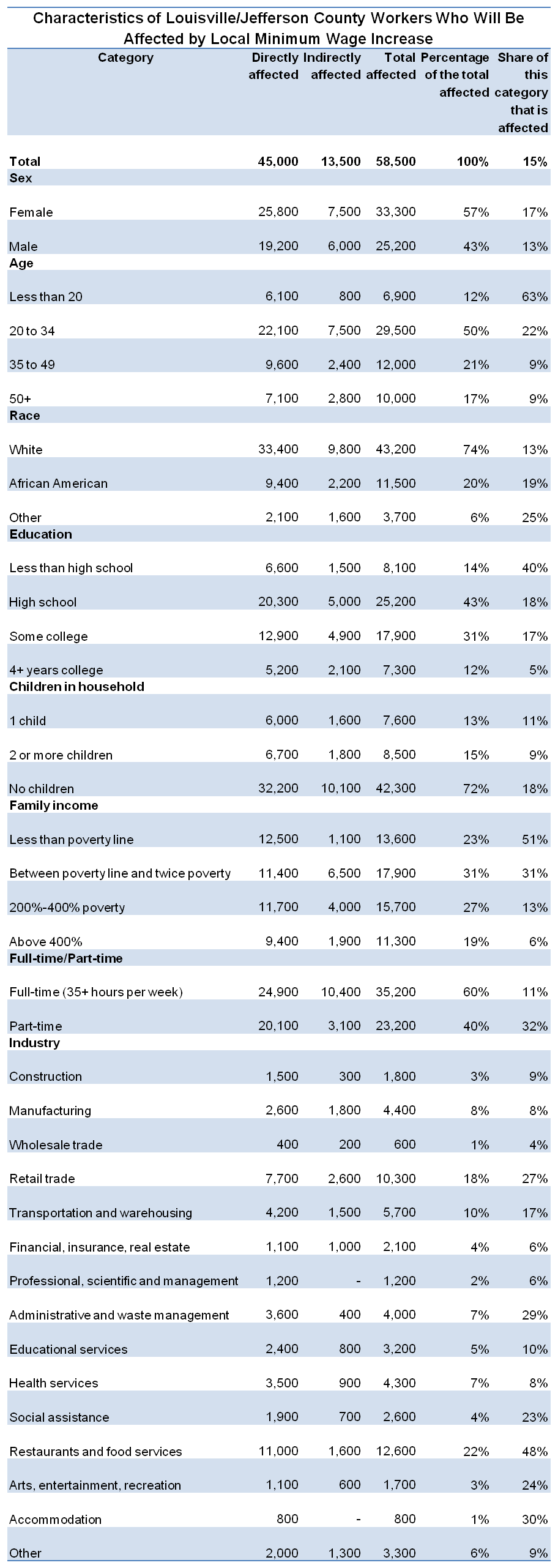An estimated 45,000 workers in Louisville/Jefferson County who would otherwise make less than $9 an hour will have higher wages once the new metro government minimum wage ordinance—the first such local law in the South—is fully implemented in two and a half years.
In addition to the workers who will directly benefit, another 13,500 who make slightly above $9 an hour could also receive a small raise when wage scales are adjusted upward, based on the experience of minimum wage increases elsewhere.
Of the workers affected, an estimated 88 percent are at least 20 years old and more are over the age of 50 than are teenagers. Fifty-seven percent are women, 60 percent work full-time and 28 percent have a child in the household.
Fifty-nine percent of those workers with family income below the poverty line will benefit. Forty percent of affected workers are employed in either restaurants and food services or retail trade. See the table below for more detail.
Those workers benefitting will get smaller increases than the estimated 62,500 who would’ve received a raise from the original $10.10 proposal. But because the final ordinance also added a clause to adjust the minimum wage annually by growth in the consumer price index in the years after 2017, those workers affected are assured that their wages will not become stuck.
The final ordinance did not increase base pay for tipped workers from the current $2.13 an hour, where it has remained since 1991. The ordinance does require that tipped workers’ total wages including tips plus base pay be at least equal to the new local minimum wage. The original ordinance had increased the base pay for tipped workers to 45 percent of the new minimum wage, or $4.55 an hour for a $10.10 minimum wage.
 Source: KCEP analysis of 2013 American Community Survey data. See here for details on methodology.
Source: KCEP analysis of 2013 American Community Survey data. See here for details on methodology.




